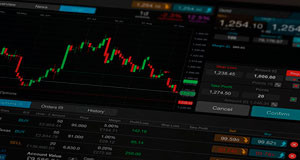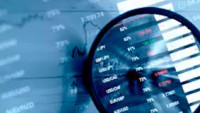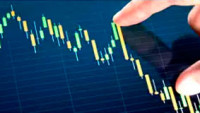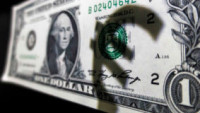 While European markets enjoyed a bit of rebound yesterday they didn’t really come close to reversing the Monday post Macron sell-off that came in the aftermath of Sunday’s confirmation of his winning of the French Presidency, though US markets managed to post more new record highs before slipping back in late trade.
While European markets enjoyed a bit of rebound yesterday they didn’t really come close to reversing the Monday post Macron sell-off that came in the aftermath of Sunday’s confirmation of his winning of the French Presidency, though US markets managed to post more new record highs before slipping back in late trade.
This would seem to suggest that while markets are relieved at not having to fret any more about the prospect of a political and populist upheaval in Europe, there is some uncertainty as to whether we can go higher from here or whether we need a brief pullback first. Either way investors don’t appear to be too concerned about the risks of sharp selloffs given the low levels seen in various index volatility indicators which are sitting at multi year lows.
An improvement in economic data, better than expected company earnings updates, with the prospect that the US Federal Reserve looks set to feel confident enough about the US economy to raise rates again next month, making it the third rate rise in seven months appears to have lulled investors into thinking that downside risk is minimal.
This sense of calm has sent the VIX back to levels last seen in 1993, while the Euro Stoxx volatility index is also not far from the record lows seen in March this year.
While low volatility is not necessarily a bad thing, it makes for a more certain investment environment, the fact that investors appear so relaxed should on the face of it be a warning sign. Furthermore given that markets have a tendency to revert to their long term mean and we currently sit at the extremes of these historical norms, this would suggest that this period of calm is unlikely to last.
Speculating on what might cause this almost complacent mindset to change is not particularly helpful, given the declines seen in the VIX in recent days, but that doesn’t mean care should not be taken, particularly given concerns about further North Korean belligerence driving an escalation in tensions in Asia, or the drivers behind the recent sharp falls being seen in commodity prices, particularly copper, crude oil and iron ore prices, and whether they are early signs of economic weakness in China.
Some of the latest data from the world’s second largest economy would appear to suggest that after a decent end to 2016 that internal demand has dropped off a touch in the first part of this year.
This does appear to have translated into a bit of a slowdown in the latest Chinese inflation numbers for April, as factory gate prices came in at 6.4%, below expectations of 6.8% and sharply down from the 7.5% in March. CPI inflation was slightly higher at 1.2% due to rising healthcare costs, while food prices showed some sharp falls. It does appear that the sharp rises seen in the PPI numbers that we’ve seen in the last 8 months do appear to be showing signs of slowing down, with the sharp declines in commodity prices helping in that regard.
EURUSD – the euro has continued to look weak after this week’s failure above 1.1000, with the prospect of a return towards the 200 day MA and 1.0820 area, after we moved below 1.0900 yesterday. A move back below 1.0800 could well see further losses towards 1.0640.
GBPUSD – currently struggling to move up towards the 1.3000 area, but the lack of dip thus far keeps the prospect of a move higher on the table for now. Support remains at last week’s low at 1.2820, with the 1.3000 area the next key hurdle to overcome, for a move towards 1.3300. Only a move below 1.2750 argues potentially back towards the 1.2600 area.
EURGBP – holding above support near the 0.8400 area for now, a break below could well see further losses towards the 0.8300 lows. We need to move back above the 0.8470 area to retarget the 0.8520 area.
USDJPY – having broken through the 113.00 area the next resistance sits at the March highs at 115.00. While below here the risk remains for a pullback towards the 113.00 area which should now act as support.













